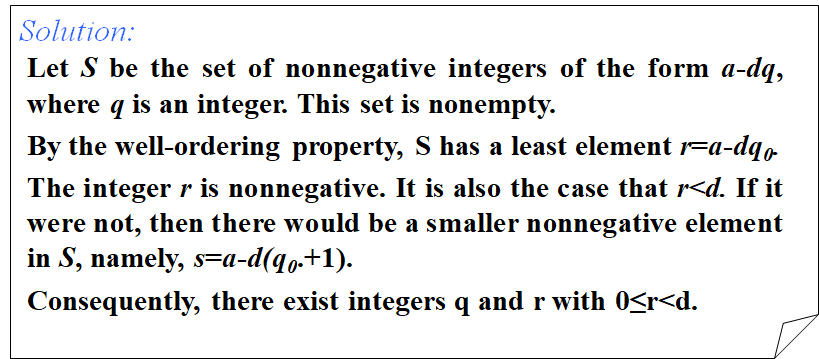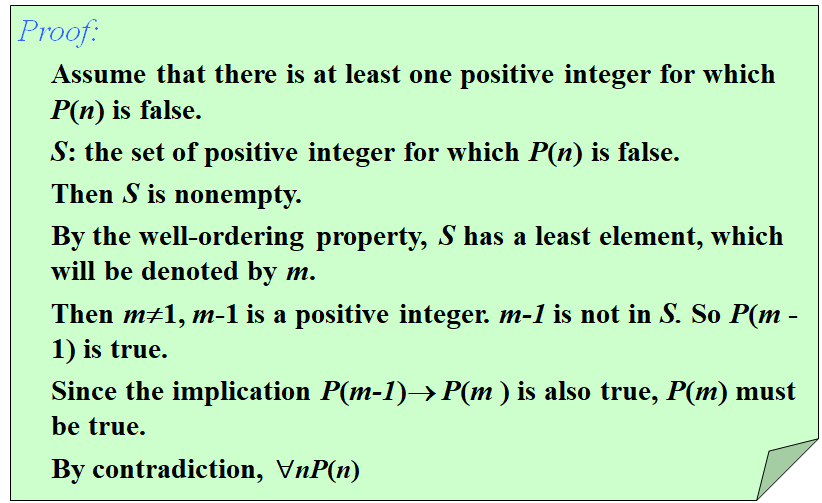本篇笔记主要介绍了数学归纳法、完全归纳法和结构归纳法的基本概念及其应用,强调了归纳法在证明数学命题中的重要性,并探讨了递归定义与归纳法之间的关系。(由 gpt-4o-mini 生成摘要)
Word Table
1. 数学归纳法 Mathematical Induction
1.1. 导论 Introduction
数学归纳法(mathematical induction) is used to prove propositions of form where the domain of discourse is the set of positive integers:
(1) Basis step: Establish (2) Inductive step: Prove that for . Conclusion: The basis step and the inductive step together imply . 更一般的证明过程 More general form of the proof procedure
1.2. 数学归纳法的证明 Proof of Mathematical Induction
良序性(the well-ordering property):Every non-empty set of non-negative integers has a least element.
Use the well-ordering property to prove the division algorithm. The division algorithm states that if is an integer and is positive integer, then there are unique integers and , with such that . Example: Proofs using the well-ordering property
Answer

The 有效性(validity) of mathematical induction follows from the well-ordering property for the set of positive integers ().

2. 完全归纳法 Strong Induction
2.1. 导论 Introduction
完全归纳法(strong induction) or 第二数学归纳法(second principle of mathematical induction):
(1) Basis step: Establish (2) Inductive step: Prove Conclusion: The basis step sand the inductive step allow one to conclude that . 更一般的证明过程 More general form of the proof procedure
Note:
The validities of both mathematical induction and strong induction follow from the well-ordering property. In fact, mathematical induction, strong induction, and well-ordering are all equivalent principles.
2.2. Usages in Computational Geometry
Some Geometry Terms
具体例题省略,可以自行参考课件。
3. 结构归纳法 Structural Induction
递归(recursion) is a principle closely related to mathematical induction. In a 递归定义(recursive definition), an object is defined in terms of itself.
Sequences, functions and sets that defined recursively is 良定义的(well-defined).
结构归纳法(structural induction) 可以用于递归定义的对象(如树、图)的归纳证明,与数学归纳法有一定相似,但更强调结构的递归性质:
- Basis Step: Show that the result holds for all elements specified in the basis step of the recursive definition to be in the set.
- Recursive Step: Show that if the statement is true for each of the elements used to construct new elements in the recursive step of the definition, the result holds for these new elements.